Extrude Mesh Node
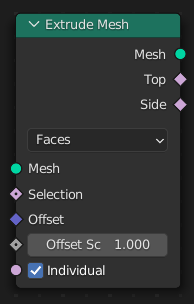
The Extrude Mesh Node generates new vertices, edges, or faces, on selected geometry and transforms them based on an offset.
The operations are similar to the extrude tools in mesh edit mode, though there are some differences. Most importantly, the node never keeps the back-faces of the extrusion in place, they are always removed. Attribute propagation rules may also be different.
Inputs
- Mesh
Standard geometry input.
- Selection
Whether to extrude each element. True values mean elements will be extruded, false values mean elements will remain unchanged.
- Offset
The amount to translate the new geometry on each axis. The default value of the ”Offset” input is the mesh’s normals. To change the distance, the Scale input can be used. However, when an input is computed for this directly, the length of the input vectors is used.
Vihje
Because the default input is the mesh’s normals, they may need to be calculated just for this node. If the extrusion is only in one direction anyway, a potential performance improvement is to connect a Vector Node instead.
- Scale
The factor used to scale elements or groups of elements.
- Individual Face Mode Only
Whether to extrude each face individually rather than extruding connected groups of faces together as regions. A quad side face will be generated on each side of every selected face.
Properties
- Mode
- Vertices
This mode is quite simple, it just attaches new edges and vertices to the selected vertices.
- Edges
Attach new quad faces to the selected edges. Vertices shared by the original selected vertices are also shared in the duplicated edges.
Muista
Depending on the situation, the normals of the new faces may be arbitrary. If the selected edges only have one selected face, then the node can pick a consistent orientation for the new faces, but if there is more than one connected face, or no connected faces, the normals may have to be adjusted afterwards.
- Faces
Extrudes contiguous regions of selected faces, or each selected face individually, depending on the Individual boolean input.
When the Individual input is false, the node will find regions of connected faces and generate new ”side” faces on the boundaries of those regions. If the whole mesh is selected and it is already a Manifold shape, then result will just be that the whole mesh moves. Any vertices, edges or faces on the inside of the face regions are just moved, they are not duplicated.
Output
- Mesh
Standard geometry output.
- Top
A boolean field output containing the top new top geometry. The domain depends on the selected mode. In Vertex mode, this is a selection of the new vertices. In Edge mode, this is a selection of the duplicated edges and in Face mode, it is a selection of the new faces.
- Side
A boolean field output containing the ”side” of the new geometry. In Vertex mode, it selects the new edges, in Edge mode, the new faces, and in Face mode, the new side faces are selected, which are all of the new faces that aren’t in the Top selection.
Examples
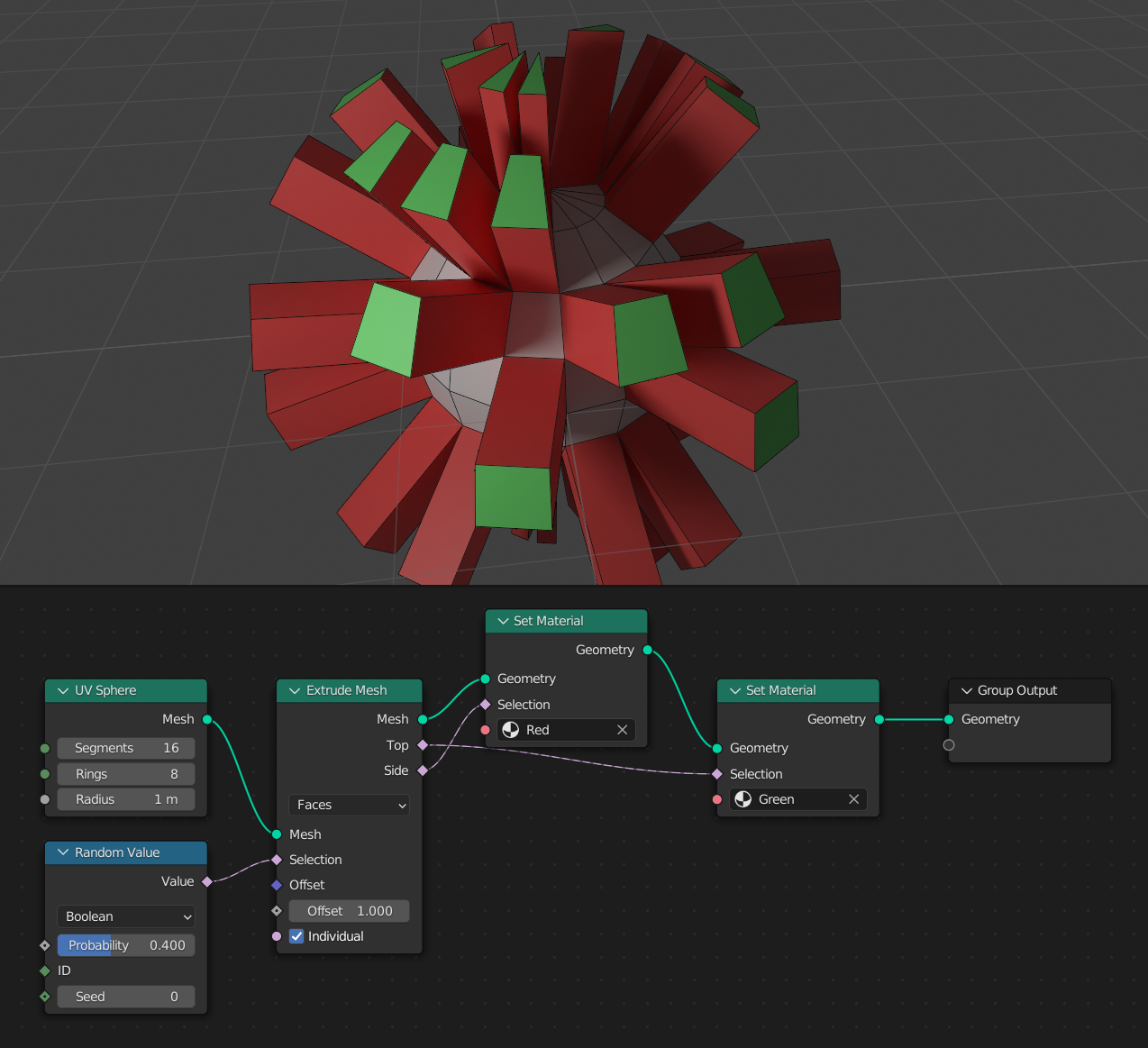
Here, the selection outputs are used to set materials on certain faces of the mesh. A Random Value Node node can be used to limit the extrusion to a random set of faces.
Attribute Propagation
Attributes are transferred to the new elements with specific rules.
An attribute will never change domains on the resulting mesh.
The id attribute does not have any special handling.
Generally boolean attributes are propagated with ”or”, meaning any connected ”true” value that is mixed in for other types will cause the new value to be ”true” as well.
The following sectopms descrone
Vertex Mode
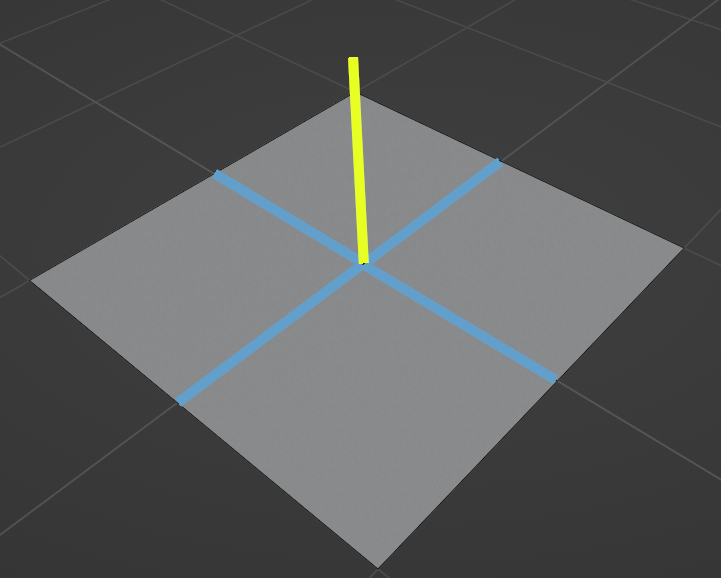
The new edges created in vertex mode use the average value of all connected edges.
New vertices have copied values from their original vertices
New edges have the average value of any connected original edges. For boolean attributes, edges are selected if any connected edges were selected.
Edge Mode
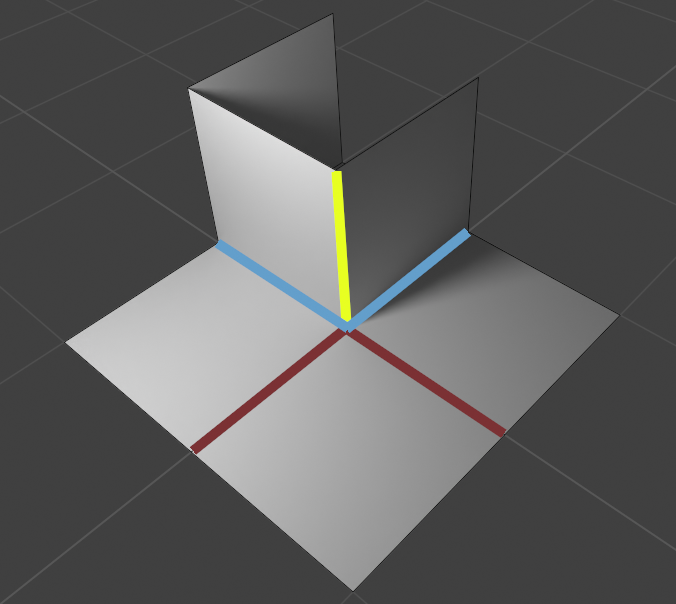
Attribute propagation for new connecting edges (the vertical yellow edge). The final value is a mix of the values from the two middle blue edges. The darker maroon edges lower on the image are not used.
New vertices have copied values from their original vertices.
Vertical connecting edges get the average value from any connected extruded edges. For booleans, the edges are selected if any connected extruded edges were selected. (Propagation rules are shown in the figure above.)
Horizontal duplicate edges have copied values from their original edges.
New faces get the average values of all faces connected to the selected edge. For booleans, faces are selected if any connected original faces were selected.
New face corners get the averaged value of corresponding corners in all faces connected to selected edges. For booleans, corners are selected if one of those corners are selected.
Face Mode

Attribute propagation for new connecting edges (the vertical yellow edge). The final value is a mix of the values from the two middle blue edges. The values from the darker maroon edges between unselected faces and on top of the extruded region are not used.
New vertices have copied values from their original vertices.
Vertical connecting edges get the average value from any connected extruded edges, not including the edges ”on top” of extruded regions. For booleans, the edges are selected if any of those connected edges were selected. (Propagation rules are shown in the figure above.)
Horizontal duplicate edges have copied values from their original edges.
New faces have copied values from the corresponding extruded faces.
New face corners have copied values from the corresponding corresponding corners of extruded faces.
Individual Face Mode
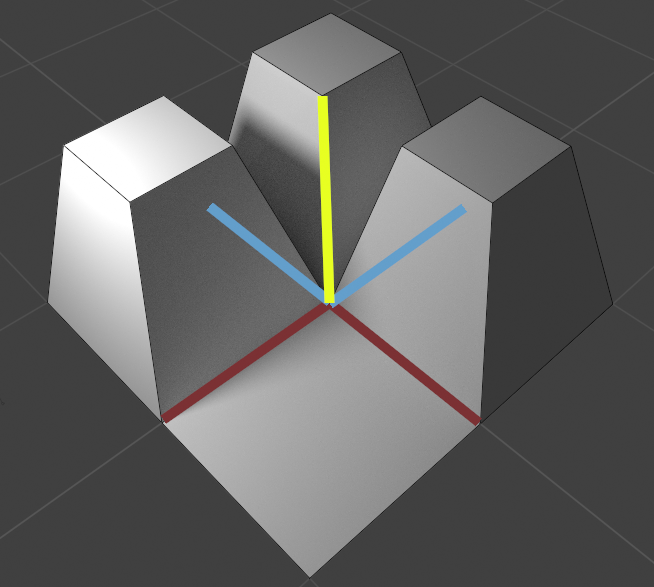
Attribute propagation for new connecting edge. Each edge uses the average values of the two neighboring edges on its extruded face.
New vertices have copied values from their original vertices.
Vertical connecting edges get the average value of the two neighboring edges on each extruded face. For booleans, the edges are selected when at least one neighbor on the extruded face was selected.
Horizontal duplicate edges have copied values from their original edges.
New side faces have copied values from their corresponding selected face.
New face corners have copied values from the corresponding corners of selected faces.